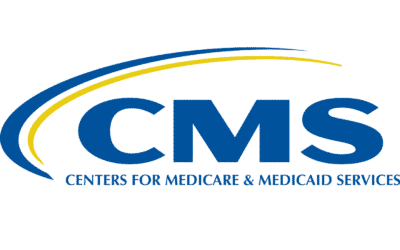Over 2014-2019, the number of Medicare beneficiaries with chronic wounds increased 13% to 10.5 million amid a surprising 20% reduction in chronic wound expenditures.
Researchers seek to explain why, and what the policy implications may be.
July 18, 2023 – A new study published online in the Journal of Medical Economics demonstrates the shifting economic impact of chronic nonhealing wounds in Medicare patients as site of care settings have shifted. The study “Chronic wound prevalence and the associated cost of treatment in Medicare beneficiaries: changes between 2014 and 2019” analyzed 2019 Medicare datasets to determine the cost of chronic wound care for Medicare beneficiaries in aggregate, by wound type, and by setting, then compared figures with a previous analysis of 2014 data to identify shifts and trends. The findings showed an increase in chronic wound care prevalence amid a surprising decrease in chronic wound care costs.
Key Findings:
- Increasing chronic wound prevalence – 16.4% of Medicare beneficiaries affected by a wound or ulcer: Over the 5-year period 2014-2019, the number of Medicare beneficiaries with chronic wounds increased from 8.2 million (14.5% of Medicare patients) to 10.5 million (16.4%) – a13% overall increase in prevalence.
- Notably, the largest increase in prevalence was among beneficiaries under age 65 – a cohort that must show proven disability to be covered by Medicare. The study authors speculate that the underlying cause of disability may be a medical condition that also increases the risk of a chronic non-healing wound.
- Decreasing overall cost: Despite the increase in prevalence, healthcare expenditures associated with chronic wound care decreased over the study period. The researchers used three different methods to estimate expenditures. Regardless of the method used, there was a reduction in expenditure, with the most conservative method showing a decrease from $29.7 billion to $22.5 billion. This is particularly surprising since overall Medicare costs increased over the same time frame.
- Shifts in site-specific spending: Hospital outpatient fees saw the largest reduction ($10.5 billion to $2.5 billion) although home health agency expenditures decreased from $1.6 billion to $1.1 billion. Physician offices saw an increase from $3.0 billion to $4.1 billion and durable medical equipment increased from $0.3 billion to $0.7 billion.
- Shifts in wound types and cost: The largest changes were increases in arterial ulcers (0.4% to 0.8%) and skin disorders (2.6% to 5.3%), although the authors suggest that the movement from ICD-9 to ICD-10 over the study time period may factor into the changing prevalence of certain types of wounds. As in 2014, surgical wound complications were the most expensive in 2019, with pressure ulcers the second most expensive. For most wound types there were decreases in expenditures, but the “generic” chronic ulcers and venous leg ulcers registered small-to-moderate increases.
“The findings from this study shed light on the changing landscape of chronic wound care and costs, as well as the implications of past Medicare policies on where patients are receiving care,” said study co-author Marcia Nusgart, R.Ph., CEO of the Alliance of Wound Care Stakeholders. “The prevalence and incidence of chronic wounds is likely to continue to increase – due in part to the aging of the U.S. population together with increases in the prevalence of obesity, diabetes, and vascular disease. Understanding trends today can help inform the policies of tomorrow to ensure quality care and positive outcomes for wound patients. These results also tell us where research and investment are most needed.”
2014 vs. 2019: What May be Driving Cost and Site-of-Care Shifts
The research team’s previous study, “An Economic Evaluation of the Impact, Cost and Medicare Policy Implication of Chronic Non-Healing Wounds,” (Value In Health, 2018] analyzed 2014 Medicare data to better estimate the cost of wound care. “Since that time, escalating healthcare costs and concern over the variability of quality and outcomes have driven changes in the healthcare landscape,” the study authors wrote. “Since 2000, there has been a shift away from acute care to hospital-based outpatient departments (HOPD) and ambulatory surgical centers, which is why 2014 data showed that outpatient charges for wound care exceeded those in acute care. However, this study shows that since 2014, cost pressures in the HOPD, such as the package pricing (a bundling of services and products at an overall lower price) of relatively expensive cellular and/or tissue-based products for skin wounds (CTPs) have caused certain wound care services to start moving to office-based settings that were not subject to these pricing approaches,” the study authors wrote.
“Given the increasing prevalence of chronic wounds, especially among the disabled under 65, it will be important to know whether these shifts have positively or negatively affected outcomes,” the authors urged.
Policy Implications
Chronic wounds represent a significant burden to society – impacting nearly 2.5% of the total population in the United States and, as this study shows, now 16.4% of the Medicare population. This prevalence is similar to that of heart disease, and some types of wounds such as diabetic foot ulcers, have a mortality rate akin to cancer. Yet chronic wounds have not been a focus of public policy from a funding, research, or education perspective. We hope that documenting the significant economic cost and impact of chronic wounds will influence priorities for Federal research funding, as well as mobilize interest for innovative payment approaches and for quality and performance measures specific to wound care.
It Is also hoped that data bringing greater transparency to the shifts in costs and care settings for chronic wounds can better inform the Centers for Medicare and Medicaid (CMS) as it considers wound care coverage and payment policies.
“Our findings show that wound care costs have gone down substantially while the number of patients requiring wound care has increased. We submit that caution should be exercised by CMS when targeting any wound care services for additional spending cuts at any site of service, directly or indirectly, since these policies would disproportionally impact patients with chronic wounds…The outlook for patients with wounds based on our study findings in regard to treatment settings suggests that any ongoing access to care problems could worsen because the population is aging with a concurrent rise in the number of patients with diabetes, which will result in an increase in the cost of treating patients with chronic non healing wounds. These patients need to be treated at multiple sites of services and if there are access issues, this makes appropriate treatment more challenging.”
“This analysis of prevalence, cost and care settings can have real-world policy implications given the project currently underway by CMS to calculate the cost of treat chronic, non-pressure ulcers,” said study co-author Caroline Fife, MD, Executive Director, U.S. Wound Registry. In late-June, CMS convened the first meeting of its Clinical Expert Workgroup on Non-Pressure Ulcer to develop episode-based cost measures for their potential use in the cost performance category of the Merit-based Incentive Program (MIPS).
The study was funded by the Alliance of Wound Care Stakeholders.
The Alliance of Wound Care Stakeholders
The Alliance is a nonprofit multidisciplinary trade association of physician medical societies and clinical associations whose mission is to promote quality care and access to products and services for people with wounds through effective advocacy and educational outreach in the regulatory, legislative, and public arenas. Learn more at www.woundcarestakeholders.org.
# # #
Media contact:
Shelley Ducker, Alliance of Wound Care Stakeholders
shelley@woundcarestakeholders.org





